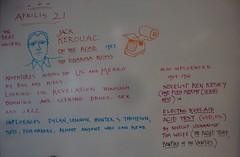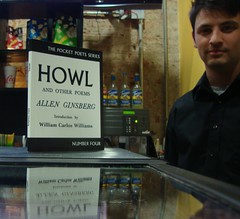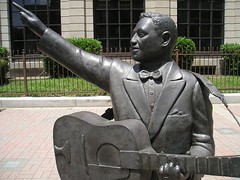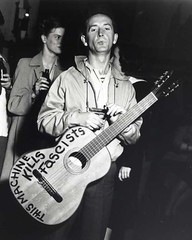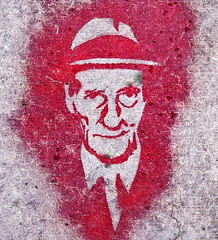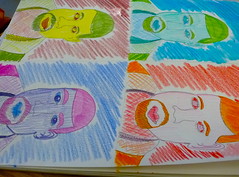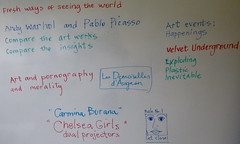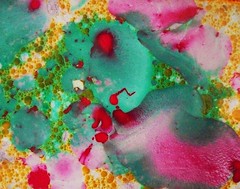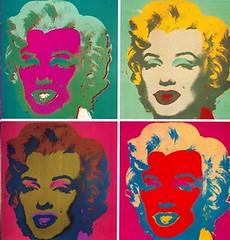"Today, one in three adults is considered clinically obese, along with one in five kids, and 24 million Americans are afflicted by type 2 diabetes, often caused by poor diet, with another 79 million people having pre-diabetes," writes author Michael Moss in the NYTimes story, "The Extraordinary Science of Addictive Junk Food."
"The public and the food companies have known for decades now that sugary, salty, fatty foods are not good for us in the quantities that we consume them. So why are the diabetes and obesity and hypertension numbers still spiraling out of control? It’s not just a matter of poor willpower on the part of the consumer and a give-the-people-what-they-want attitude on the part of the food manufacturers. What I found, over four years of research and reporting, was a conscious effort — taking place in labs and marketing meetings and grocery-store aisles — to get people hooked on foods that are convenient and inexpensive."
Locally speaking -
"The fight against obesity in the Shreveport area has started," says KTBS.com. "Healthy Green and into the Outdoors kicked off Saturday, and its goal is to get you fit. This comes after an announcement last year from the Blue Cross, Blue Shield of Louisiana Foundation that detailed an initiative to fight obesity."
"We want people to get healthy," Community Foundation Executive Director Paula Hickman said. "We want them to live environmentally sound practices, and we want them to get up and moving outside."
Her organization and others will promote healthy eating, exercise and green practices locally through several healthy living projects. The most important is the creation of community gardens around Shreveport. Hickman says obesity is an expensive problem in the area.
"Our community has about a 27 percent obesity rate, and that's costing us about $150 million a year," Hickman said.
More than a million dollars has been poured into Shreveport for health projects. Most of that was granted by the Blue Cross, Blue Shield of Louisiana Foundation. Its executive director Christy Reeves says the projects will last for three years.
"There are certain phases for everything. So, over the next three years you're going to see activities like the one that's today," Reeves said. "This is one that is specific to this neighborhood and region, but we'll have a lot of activities across the area over the next three years."
Thursday, February 28, 2013
Wednesday, February 27, 2013
Jackson Pollock's and Abstract expressionism
Abstract expressionism was an American post–World War II art movement, says Wikipedia. It was the first specifically American movement to achieve international influence and put New York City at the center of the western art world, a role formerly filled by Paris.
Technically, an important predecessor is surrealism, with its emphasis on spontaneous, automatic or subconscious creation. Jackson Pollock's dripping paint onto a canvas laid on the floor is a technique that has its roots in the work of André Masson, Max Ernst and David Alfaro Siqueiros.
It has an image of being rebellious, anarchic, highly idiosyncratic and, some feel, nihilistic.[2] In practice, the term is applied to any number of artists working (mostly) in New York who had quite different styles and even to work that is neither especially abstract nor expressionist.
Pollock's "action paintings", with their "busy" feel, are different from the violent and grotesque Women series of Willem de Kooning's figurative paintings and the rectangles of color in Mark Rothko's Color Field paintings.
American social realism had been the mainstream in the 1930s. It had been influenced not only by the Great Depression but also by the muralists of Mexico such as David Alfaro Siqueiros and Diego Rivera. The political climate after World War II did not long tolerate the social protests of these painters.
The McCarthy era after World War II was a time of artistic censorship in the United States, but if the subject matter were totally abstract then it would be seen as apolitical, and therefore safe.
It included painters like Arshile Gorky, Franz Kline, Clyfford Still, Hans Hofmann, Willem de Kooning, Jackson Pollock.
Jackson Pollock's work has always polarised critics. Harold Rosenberg spoke of the transformation of painting into an existential drama in Pollock's work, in which "what was to go on the canvas was not a picture but an event".
The 1940s in New York City heralded the triumph of American Abstract expressionism, a modernist movement that combined lessons learned from Henri Matisse, Pablo Picasso, Surrealism, Joan Miró, Cubism, Fauvism, and early Modernism via great teachers in America like Hans Hofmann from Germany and John D. Graham from Russia.
Pollock realized that the journey toward making a work of art was as important as the work of art itself.
Technically, an important predecessor is surrealism, with its emphasis on spontaneous, automatic or subconscious creation. Jackson Pollock's dripping paint onto a canvas laid on the floor is a technique that has its roots in the work of André Masson, Max Ernst and David Alfaro Siqueiros.
It has an image of being rebellious, anarchic, highly idiosyncratic and, some feel, nihilistic.[2] In practice, the term is applied to any number of artists working (mostly) in New York who had quite different styles and even to work that is neither especially abstract nor expressionist.
Pollock's "action paintings", with their "busy" feel, are different from the violent and grotesque Women series of Willem de Kooning's figurative paintings and the rectangles of color in Mark Rothko's Color Field paintings.
American social realism had been the mainstream in the 1930s. It had been influenced not only by the Great Depression but also by the muralists of Mexico such as David Alfaro Siqueiros and Diego Rivera. The political climate after World War II did not long tolerate the social protests of these painters.
The McCarthy era after World War II was a time of artistic censorship in the United States, but if the subject matter were totally abstract then it would be seen as apolitical, and therefore safe.
It included painters like Arshile Gorky, Franz Kline, Clyfford Still, Hans Hofmann, Willem de Kooning, Jackson Pollock.
Jackson Pollock's work has always polarised critics. Harold Rosenberg spoke of the transformation of painting into an existential drama in Pollock's work, in which "what was to go on the canvas was not a picture but an event".
The 1940s in New York City heralded the triumph of American Abstract expressionism, a modernist movement that combined lessons learned from Henri Matisse, Pablo Picasso, Surrealism, Joan Miró, Cubism, Fauvism, and early Modernism via great teachers in America like Hans Hofmann from Germany and John D. Graham from Russia.
Pollock realized that the journey toward making a work of art was as important as the work of art itself.
Tuesday, February 26, 2013
The Jackson Pollock Quiz
1. Cheap housing can be had by struggling painters in the 1940's in Manhattan's __.
a) West Side b) Chelsea c) SoHo d) Lower East Side.
2. A perquisite, or "perk," for government work in the 1940's was a) draft deferment b) 4-F draft status c) salary adequate to feed a family d) free housing.
3. The state that is immediately northeast of New York: a) New Jersey b) Connecticut c) Delaware d) Massachusetts.
4. Pollock's almost-as-famous wife, also a modernist painter, was a) Peggy Guggenheim b) Marilyn Monroe c) Frida Kahlo d) Lee Krasner.
5. Pollock's principal patron was a) Peggy Guggenheim b) Marilyn Monroe c) Frida Kahlo d) Lee Krasner.
6. The school of art to which Pollock and his peers were attached by the media:
___ expressionism. a) Surrealist b) Abstract c) Modernist d) Dadaist.
7. American magazine with emphasis on photojournalism; it dominated the market from the 40's through the 70's: a) Fortune b) Look c) Life d) Saturday Evening Post.
8. American illustrator whose realistic work represented the values of the middle-class:
a) Norman Rockwell b) Thomas Hart Benton c) Marcel Duchamp d) Henry Luce.
9. T / F According to the movie Pollock the NY Times art critic wrote overwhelmingly positive reviews of his shows.
10. Pollock and Krasner have a productive period when they moved out of Manhattan. They relocated to a) Connecticut b) New Jersey c) Martha's Vineyard Island d) Long Island.
11. Successful artist of Pollock's circle: a) Pablo Picasso b) Willem de Kooning c) Andy Warhol d) Keith Haring.
12. The person who offered this literary quote: "To whom shall I hire myself out? / What beast must I adore? / What holy image is attacked? / What hearts must I break? / What lie must I maintain? / And, what blood shed?" a) Jackson Pollock
b) Lee Krasner c) Peggy Guggenheim d) Sande Pollock (the brother).
a) West Side b) Chelsea c) SoHo d) Lower East Side.
2. A perquisite, or "perk," for government work in the 1940's was a) draft deferment b) 4-F draft status c) salary adequate to feed a family d) free housing.
3. The state that is immediately northeast of New York: a) New Jersey b) Connecticut c) Delaware d) Massachusetts.
4. Pollock's almost-as-famous wife, also a modernist painter, was a) Peggy Guggenheim b) Marilyn Monroe c) Frida Kahlo d) Lee Krasner.
5. Pollock's principal patron was a) Peggy Guggenheim b) Marilyn Monroe c) Frida Kahlo d) Lee Krasner.
6. The school of art to which Pollock and his peers were attached by the media:
___ expressionism. a) Surrealist b) Abstract c) Modernist d) Dadaist.
7. American magazine with emphasis on photojournalism; it dominated the market from the 40's through the 70's: a) Fortune b) Look c) Life d) Saturday Evening Post.
8. American illustrator whose realistic work represented the values of the middle-class:
a) Norman Rockwell b) Thomas Hart Benton c) Marcel Duchamp d) Henry Luce.
9. T / F According to the movie Pollock the NY Times art critic wrote overwhelmingly positive reviews of his shows.
10. Pollock and Krasner have a productive period when they moved out of Manhattan. They relocated to a) Connecticut b) New Jersey c) Martha's Vineyard Island d) Long Island.
11. Successful artist of Pollock's circle: a) Pablo Picasso b) Willem de Kooning c) Andy Warhol d) Keith Haring.
12. The person who offered this literary quote: "To whom shall I hire myself out? / What beast must I adore? / What holy image is attacked? / What hearts must I break? / What lie must I maintain? / And, what blood shed?" a) Jackson Pollock
b) Lee Krasner c) Peggy Guggenheim d) Sande Pollock (the brother).
The 1950's Pop Culture Quiz
1. The Andrews Sisters represented post-WWII US mainstream culture
with their tune, "The Boogie-woogie __ Boy of Company B."
a) Bugle b) Bad c) Blue-eyed d) Big and Fine
2. Alternative culture in the 1950's involved a jug of red wine, a couple of guitars and folk tunes, often protest songs written by the hitchhiking troubador, __ __. a) Lead Belly b) Harry Belafonte c) Bob Dylan d) Woody Guthrie.
3. Catcher in the Rye's portrayal of Holden Caufield's 16 year old life became a success. Who wrote the book? a) Herman Wouk b JD Salinger c) William Faulkner
4. Rosa Parks' refusal to give up her seat on a bus led to a Supreme Court decision outlawing bus segregation. Where did this happen? a) Memphis, Tennessee b) Macon, Georgia c) Montgomery, Alabama
5. Where was Elvis Presley born? a) Memphis, Tennessee b) Tupelo, Mississippi
c) Shreveport, La
6. In the play and movie, Streetcar Named Desire, the lead male is belowing, "Stellaaaaaa!" The actor? a) Marlon Brando b) James Dean c) Montgomery Clift
7. The book and movie, "Diary of Anne Frank" tell of a girl hiding from the Nazis. It took place in a) Amsterdam, Holland b)Berlin, Germany c) Paris, France
8. The first artificial satellite to be successfully orbited was called Sputnik. It was a triumph for the a) USA b) Russians c) British d) Germans.
9. Credit for coining the term "Rock and Roll goes to a disc jockey, or announcer: a) Dick Clark b) Alan Freed c) Wolfman Jack
10. In 1957, a wild r'nb performer- "Good Golly, Miss Molly!" - left the music business to become a preacher. a) Little Richard b) Jerry Lee Lewis c) Elvis Presley.
11. Which wild rock 'n roll singer - "Great Balls of Fire" - married his 13 year old cousin? a) Jerry Lee Lewis b) Chuck Berry c) Bill Haley.
12. Which of these tunes was recorded by New Orleans native Fats Domino and then covered by the singer-movie star Pat Boone? a) April Love b) Ain't That a Shame c) I'm Walkin'.
13. Name the Little Richard song whose refrain is "A-wop bop a-loo bop a-lop bam boom"? a) Good Golly Miss Molly b) Be-Bop-a-Lula c) Tutti Fruitti.
14. "You shake my nerves and you rattle my brain"... goes with? a) All Shook Up b) Great Balls of Fire c) Shake Rattle and Roll
15. Fats sang, "I found my thrill..." Where? a) Kansas City b) Heartbreak Hotel c) Blueberry Hill.
16. The name of the 42 year-old African-American who refused to give her seat up to a white bus passenger in Alabama in 1955? a) Homer Plessy b) Billie Holiday c) Rosa Parks.
17. In 1958 a British artist designed the classic logo today called "the peace sign." He produced it for European protests against a) Vietnam War b) Cold War c) nuclear bombs d) anti-drug laws.
18. Naked Lunch, by Wm Burroughs, is less about coprophilia, sodomy and emaciated junkies than it is about nude couples sipping wine and smoking ganja at midday. T / F
19. Today the long poem "Howl," by Allen Ginsberg, is celebrated in a James DeFranco movie and by teachers in fine arts classes. Yet in the 1950's it was considered legally obscene. It was famously banned in __ . a) Boston b) San Francisco c) Chicago.
20. First US auto to have a fiber glass body, 1953: a) Thunderbird b) Corvette c) Corvair d) Falcon.
21. "Deep down Louisiana close to New Orleans. Way back up in the woods among the evergreens. There stood a log cabin made of earth and wood. Where lived a country boy named Johnny B. Goode. Who never ever learned to read or write so well; but he could play the guitar just like a ringing a bell." a) Chuck Berry b) Fats Domino c) Elvis Presley d) Jerry Lee Lewis.
22. Legendarily typed on a huge roll of paper so the maniacal author would not have to stop to interrupt the flow of his writing in changing sheets of paper: a) Howl b) Naked Lunch c) On the Road d) Dharma Bums.
23. Mooringsport, La, singer who resided in NYC from the 1930's through 1949, the year of his untimely death. a) Hank Williams b) Huddie Ledbetter c) Jerry Lee Lewis d) BB King.
24. A 1950's "hootenanny" featured a) folk music b) country music c) Delta blues d) Appalachian music.
25. Painters and sculptors in NYC in the 1950's typically lived in the a) Upper West Side b) Midtown c) SoHo d) Lower East Side of Manhattan.
with their tune, "The Boogie-woogie __ Boy of Company B."
a) Bugle b) Bad c) Blue-eyed d) Big and Fine
2. Alternative culture in the 1950's involved a jug of red wine, a couple of guitars and folk tunes, often protest songs written by the hitchhiking troubador, __ __. a) Lead Belly b) Harry Belafonte c) Bob Dylan d) Woody Guthrie.
3. Catcher in the Rye's portrayal of Holden Caufield's 16 year old life became a success. Who wrote the book? a) Herman Wouk b JD Salinger c) William Faulkner
4. Rosa Parks' refusal to give up her seat on a bus led to a Supreme Court decision outlawing bus segregation. Where did this happen? a) Memphis, Tennessee b) Macon, Georgia c) Montgomery, Alabama
5. Where was Elvis Presley born? a) Memphis, Tennessee b) Tupelo, Mississippi
c) Shreveport, La
6. In the play and movie, Streetcar Named Desire, the lead male is belowing, "Stellaaaaaa!" The actor? a) Marlon Brando b) James Dean c) Montgomery Clift
7. The book and movie, "Diary of Anne Frank" tell of a girl hiding from the Nazis. It took place in a) Amsterdam, Holland b)Berlin, Germany c) Paris, France
8. The first artificial satellite to be successfully orbited was called Sputnik. It was a triumph for the a) USA b) Russians c) British d) Germans.
9. Credit for coining the term "Rock and Roll goes to a disc jockey, or announcer: a) Dick Clark b) Alan Freed c) Wolfman Jack
10. In 1957, a wild r'nb performer- "Good Golly, Miss Molly!" - left the music business to become a preacher. a) Little Richard b) Jerry Lee Lewis c) Elvis Presley.
11. Which wild rock 'n roll singer - "Great Balls of Fire" - married his 13 year old cousin? a) Jerry Lee Lewis b) Chuck Berry c) Bill Haley.
12. Which of these tunes was recorded by New Orleans native Fats Domino and then covered by the singer-movie star Pat Boone? a) April Love b) Ain't That a Shame c) I'm Walkin'.
13. Name the Little Richard song whose refrain is "A-wop bop a-loo bop a-lop bam boom"? a) Good Golly Miss Molly b) Be-Bop-a-Lula c) Tutti Fruitti.
14. "You shake my nerves and you rattle my brain"... goes with? a) All Shook Up b) Great Balls of Fire c) Shake Rattle and Roll
15. Fats sang, "I found my thrill..." Where? a) Kansas City b) Heartbreak Hotel c) Blueberry Hill.
16. The name of the 42 year-old African-American who refused to give her seat up to a white bus passenger in Alabama in 1955? a) Homer Plessy b) Billie Holiday c) Rosa Parks.
17. In 1958 a British artist designed the classic logo today called "the peace sign." He produced it for European protests against a) Vietnam War b) Cold War c) nuclear bombs d) anti-drug laws.
18. Naked Lunch, by Wm Burroughs, is less about coprophilia, sodomy and emaciated junkies than it is about nude couples sipping wine and smoking ganja at midday. T / F
19. Today the long poem "Howl," by Allen Ginsberg, is celebrated in a James DeFranco movie and by teachers in fine arts classes. Yet in the 1950's it was considered legally obscene. It was famously banned in __ . a) Boston b) San Francisco c) Chicago.
20. First US auto to have a fiber glass body, 1953: a) Thunderbird b) Corvette c) Corvair d) Falcon.
21. "Deep down Louisiana close to New Orleans. Way back up in the woods among the evergreens. There stood a log cabin made of earth and wood. Where lived a country boy named Johnny B. Goode. Who never ever learned to read or write so well; but he could play the guitar just like a ringing a bell." a) Chuck Berry b) Fats Domino c) Elvis Presley d) Jerry Lee Lewis.
22. Legendarily typed on a huge roll of paper so the maniacal author would not have to stop to interrupt the flow of his writing in changing sheets of paper: a) Howl b) Naked Lunch c) On the Road d) Dharma Bums.
23. Mooringsport, La, singer who resided in NYC from the 1930's through 1949, the year of his untimely death. a) Hank Williams b) Huddie Ledbetter c) Jerry Lee Lewis d) BB King.
24. A 1950's "hootenanny" featured a) folk music b) country music c) Delta blues d) Appalachian music.
25. Painters and sculptors in NYC in the 1950's typically lived in the a) Upper West Side b) Midtown c) SoHo d) Lower East Side of Manhattan.
Monday, February 25, 2013
The classic extended poem, Howl, is also a James DeFranco movie
"The Beat Generation, that was a vision that we had, John Clellon Holmes and I, and Allen Ginsberg in an even wilder way, in the late Forties, of a generation of crazy, illuminated hipsters suddenly rising and roaming America, serious, bumming and hitchhiking everywhere, ragged, beatific, beautiful in an ugly graceful new way—a vision gleaned from the way we had heard the word "beat" spoken on street corners on Times Square and in the Village, in other cities in the downtown city night of postwar America—beat, meaning down and out but full of intense conviction. We'd even heard old 1910 Daddy Hipsters of the streets speak the word that way, with a melancholy sneer. It never meant juvenile delinquents, it meant characters of a special spirituality who didn't gang up but were solitary Bartlebies staring out the dead wall window of our civilization..." [4][5]
Jack Kerouac
Jack Kerouac
Allen Ginsberg: poet and spiritual adviser to American non-conformists
Irwin Allen Ginsberg (1926 – 1997) was an American poet and one of the leading figures of the Beat Generation in the 1950s, acc to Wikipedia.
He vigorously opposed militarism, economic materialism and sexual repression.
Howl
BY ALLEN GINSBERG
For Carl Solomon
I saw the best minds of my generation destroyed by madness, starving hysterical naked,
dragging themselves through the negro streets at dawn looking for an angry fix,
angelheaded hipsters burning for the ancient heavenly connection to the starry dynamo in the machinery of night,
who poverty and tatters and hollow-eyed and high sat up smoking in the supernatural darkness of cold-water flats floating across the tops of cities contemplating jazz,
who bared their brains to Heaven under the El and saw Mohammedan angels staggering on tenement roofs illuminated,
who passed through universities with radiant cool eyes hallucinating Arkansas and Blake-light tragedy among the scholars of war,
who were expelled from the academies for crazy & publishing obscene odes on the windows of the skull,
who cowered in unshaven rooms in underwear, burning their money in wastebaskets and listening to the Terror through the wall,
who got busted in their pubic beards returning through Laredo with a belt of marijuana for New York,
who ate fire in paint hotels or drank turpentine in Paradise Alley, death, or purgatoried their torsos night after night
with dreams, with drugs, with waking nightmares, alcohol and cock and endless balls,
incomparable blind streets of shuddering cloud and lightning in the mind leaping toward poles of Canada & Paterson, illuminating all the motionless world of Time between.
He vigorously opposed militarism, economic materialism and sexual repression.
Howl
BY ALLEN GINSBERG
For Carl Solomon
I saw the best minds of my generation destroyed by madness, starving hysterical naked,
dragging themselves through the negro streets at dawn looking for an angry fix,
angelheaded hipsters burning for the ancient heavenly connection to the starry dynamo in the machinery of night,
who poverty and tatters and hollow-eyed and high sat up smoking in the supernatural darkness of cold-water flats floating across the tops of cities contemplating jazz,
who bared their brains to Heaven under the El and saw Mohammedan angels staggering on tenement roofs illuminated,
who passed through universities with radiant cool eyes hallucinating Arkansas and Blake-light tragedy among the scholars of war,
who were expelled from the academies for crazy & publishing obscene odes on the windows of the skull,
who cowered in unshaven rooms in underwear, burning their money in wastebaskets and listening to the Terror through the wall,
who got busted in their pubic beards returning through Laredo with a belt of marijuana for New York,
who ate fire in paint hotels or drank turpentine in Paradise Alley, death, or purgatoried their torsos night after night
with dreams, with drugs, with waking nightmares, alcohol and cock and endless balls,
incomparable blind streets of shuddering cloud and lightning in the mind leaping toward poles of Canada & Paterson, illuminating all the motionless world of Time between.
Hitch-hiking across the continent with mad poets: On the Road and Dharma Bums by Jack Kerouac
Jean-Louis "Jack" Kerouac (1922 – 1969) was an American novelist and poet, says Wikipedia.
He is considered a literary iconoclast and, alongside William S. Burroughs and Allen Ginsberg, a pioneer of the Beat Generation.[2]
Kerouac is recognized for his spontaneous method of writing, covering topics such as Catholic spirituality, jazz, promiscuity, Buddhism, drugs, poverty, and travel. Kerouac became an underground celebrity and, with other beats, a progenitor of the hippie movement.
In 1969, at age 47, Kerouac died from internal bleeding due to long-standing abuse of alcohol. Today the beat travelogue On The Road continues to sell 100,000 copies a year in the U.S. and Canada alone.
Legend has it that Kerouac wrote On the Road in three weeks, typing it almost nonstop on a 120-foot roll of paper. The truth is that the book actually had a much longer, bumpier journey from inspiration to publication, complete with multiple rewrites and repeated rejections.
Kerouac chronicled parts of his own experience with Buddhism, as well as some of his adventures with Gary Snyder and other San Francisco-area poets, in The Dharma Bums, set in California and Washington and published in 1958.
“the only people for me are the mad ones, the ones who are mad to live, mad to talk, mad to be saved, desirous of everything at the same time, the ones who never yawn or say a commonplace thing, but burn, burn, burn like fabulous yellow roman candles exploding like spiders across the stars.”
― Jack Kerouac, On the Road
“The best teacher is experience and not through someone's distorted point of view”
― Jack Kerouac, On the Road
He is considered a literary iconoclast and, alongside William S. Burroughs and Allen Ginsberg, a pioneer of the Beat Generation.[2]
Kerouac is recognized for his spontaneous method of writing, covering topics such as Catholic spirituality, jazz, promiscuity, Buddhism, drugs, poverty, and travel. Kerouac became an underground celebrity and, with other beats, a progenitor of the hippie movement.
In 1969, at age 47, Kerouac died from internal bleeding due to long-standing abuse of alcohol. Today the beat travelogue On The Road continues to sell 100,000 copies a year in the U.S. and Canada alone.
Legend has it that Kerouac wrote On the Road in three weeks, typing it almost nonstop on a 120-foot roll of paper. The truth is that the book actually had a much longer, bumpier journey from inspiration to publication, complete with multiple rewrites and repeated rejections.
Kerouac chronicled parts of his own experience with Buddhism, as well as some of his adventures with Gary Snyder and other San Francisco-area poets, in The Dharma Bums, set in California and Washington and published in 1958.
“the only people for me are the mad ones, the ones who are mad to live, mad to talk, mad to be saved, desirous of everything at the same time, the ones who never yawn or say a commonplace thing, but burn, burn, burn like fabulous yellow roman candles exploding like spiders across the stars.”
― Jack Kerouac, On the Road
“The best teacher is experience and not through someone's distorted point of view”
― Jack Kerouac, On the Road
Leadbelly statue on Texas St
Huddie William Ledbetter (1888 – 1949) was an iconic American folk and blues musician, and multi-instrumentalist, notable for his strong vocals, his virtuosity on the twelve-string guitar, and the songbook of folk standards he introduced, says Wikipedia.
In 1933, he was "discovered" by folklorists John Lomax and son Alan Lomax[11] during a visit to the Angola Prison Farm. Impressed by his vibrant tenor voice and huge repertoire, they recorded him on portable aluminum disc recording equipment for the Library of Congress.
They returned to record with better equipment in July of 1934; they recorded hundreds of his songs. His signature song was "Goodnight Irene."
"Pick a bale of cotton," "Midnight Special," and "In the Pines" are also internationally-known Leadbelly tunes.
In 1933, he was "discovered" by folklorists John Lomax and son Alan Lomax[11] during a visit to the Angola Prison Farm. Impressed by his vibrant tenor voice and huge repertoire, they recorded him on portable aluminum disc recording equipment for the Library of Congress.
They returned to record with better equipment in July of 1934; they recorded hundreds of his songs. His signature song was "Goodnight Irene."
"Pick a bale of cotton," "Midnight Special," and "In the Pines" are also internationally-known Leadbelly tunes.
Depression-era folk singer Woody Guthrie rambled across the country
Woodrow Wilson "Woody" Guthrie ( 1912 – 1967) was an American singer-songwriter and folk musician whose musical legacy includes hundreds of political, traditional and children's songs, ballads and improvised works, says Wikipedia.
He frequently performed with the slogan This Machine Kills Fascists displayed on his guitar. His best-known song is "This Land Is Your Land."
Such songwriters as Bob Dylan, Bruce Springsteen, John Mellencamp, Pete Seeger, Joe Strummer and Jeff Tweedy have acknowledged Guthrie as a major influence.
THIS LAND IS YOUR LAND
words and music by Woody Guthrie
This land is your land, this land is my land
From California, to the New York Island
From the redwood forest, to the gulf stream waters
This land was made for you and me
As I was walking a ribbon of highway
I saw above me an endless skyway
I saw below me a golden valley
This land was made for you and me
I've roamed and rambled and I've followed my footsteps
To the sparkling sands of her diamond deserts
And all around me a voice was sounding
This land was made for you and me
The sun comes shining as I was strolling
The wheat fields waving and the dust clouds rolling
The fog was lifting a voice come chanting
This land was made for you and me
As I was walkin' - I saw a sign there
And that sign said - no tress passin'
But on the other side .... it didn't say nothin!
Now that side was made for you and me!
He frequently performed with the slogan This Machine Kills Fascists displayed on his guitar. His best-known song is "This Land Is Your Land."
Such songwriters as Bob Dylan, Bruce Springsteen, John Mellencamp, Pete Seeger, Joe Strummer and Jeff Tweedy have acknowledged Guthrie as a major influence.
THIS LAND IS YOUR LAND
words and music by Woody Guthrie
This land is your land, this land is my land
From California, to the New York Island
From the redwood forest, to the gulf stream waters
This land was made for you and me
As I was walking a ribbon of highway
I saw above me an endless skyway
I saw below me a golden valley
This land was made for you and me
I've roamed and rambled and I've followed my footsteps
To the sparkling sands of her diamond deserts
And all around me a voice was sounding
This land was made for you and me
The sun comes shining as I was strolling
The wheat fields waving and the dust clouds rolling
The fog was lifting a voice come chanting
This land was made for you and me
As I was walkin' - I saw a sign there
And that sign said - no tress passin'
But on the other side .... it didn't say nothin!
Now that side was made for you and me!
Friday, February 22, 2013
Wolfgang Amadeus Mozart: composer and performer extraordinaire
Wolfgang Amadeus Mozart: voracious learner, profoundly influential in the graceful as well as the dark and passionate
Johann Chrysostom Wolfgang Amadeus Mozart[1] (1756 – 1791), was a prolific and influential composer of the Classical era. He composed over six hundred works, says Wikipedia, many acknowledged as pinnacles of symphonic, concertante, chamber, piano, operatic, and choral music; and he is among the most enduringly popular of classical composers.
Mozart showed prodigious ability from his earliest childhood in Salzburg.
Already competent on keyboard and violin, he composed from the age of five and performed before European royalty; at seventeen he was engaged as a court musician in Salzburg, but grew restless and traveled in search of a better position, always composing abundantly.
Visiting Vienna in 1781 he was dismissed from his Salzburg position and chose to stay in the capital, where over the rest of life he achieved fame but little financial security. The final years in Vienna yielded many of his best-known symphonies, concertos, and operas, and the Requiem.
The circumstances of his early death have been much mythologized. He was survived by his wife Constanze and two sons.
Mozart always learned voraciously from others, and developed a brilliance and maturity of style that encompassed the light and graceful along with the dark and passionate—the whole informed by a vision of humanity "redeemed through art, forgiven, and reconciled with nature and the absolute".[2]
His influence on all subsequent Western art music is profound. Beethoven wrote his own early compositions in the shadow of Mozart, of whom Joseph Haydn wrote that "posterity will not see such a talent again in 100 years".[3]
Johann Chrysostom Wolfgang Amadeus Mozart[1] (1756 – 1791), was a prolific and influential composer of the Classical era. He composed over six hundred works, says Wikipedia, many acknowledged as pinnacles of symphonic, concertante, chamber, piano, operatic, and choral music; and he is among the most enduringly popular of classical composers.
Mozart showed prodigious ability from his earliest childhood in Salzburg.
Already competent on keyboard and violin, he composed from the age of five and performed before European royalty; at seventeen he was engaged as a court musician in Salzburg, but grew restless and traveled in search of a better position, always composing abundantly.
Visiting Vienna in 1781 he was dismissed from his Salzburg position and chose to stay in the capital, where over the rest of life he achieved fame but little financial security. The final years in Vienna yielded many of his best-known symphonies, concertos, and operas, and the Requiem.
The circumstances of his early death have been much mythologized. He was survived by his wife Constanze and two sons.
Mozart always learned voraciously from others, and developed a brilliance and maturity of style that encompassed the light and graceful along with the dark and passionate—the whole informed by a vision of humanity "redeemed through art, forgiven, and reconciled with nature and the absolute".[2]
His influence on all subsequent Western art music is profound. Beethoven wrote his own early compositions in the shadow of Mozart, of whom Joseph Haydn wrote that "posterity will not see such a talent again in 100 years".[3]
Thursday, February 21, 2013
Cut-up technique writing, aka automatic writing
The cut-up technique is an aleatory (random) literary technique in which a text is cut up and rearranged to create a new text.
The concept can be traced to at least the Dadaists of the 1920s, but was popularized in the late 1950s and early 1960s by writer William S. Burroughs.
Cut-up is performed by taking a finished and fully linear text and cutting it in pieces with a few or single words on each piece. The resulting pieces are then rearranged into a new text.
Fold-in is the technique of taking two sheets of linear text (with the same linespacing), folding each sheet in half vertically and combining with the other, then reading across the resulting page.
A precedent of the technique occurred during a Dadaist rally in the 1920s in which Tristan Tzara offered to create a poem on the spot by pulling words at random from a hat. Collage, which was popularized roughly contemporaneously with the Surrealist movement, sometimes incorporated texts such as newspapers or brochures.
Burroughs suggested cut-ups may be effective as a form of divination saying, "When you cut into the present the future leaks out."
The I Ching, also known as the Book of Changes, is one of the oldest of the Chinese classic texts.[1]
The book contains a divination system comparable to Western geomancy or the West African Ifá system; in Western cultures and modern East Asia, it is still widely used for this purpose, says Wikipedia.
The text of the I Ching is a set of oracular statements represented by 64 sets of six lines each called hexagrams.
The oldest method for casting the hexagrams, the yarrow stalk method, was gradually replaced during the Han Dynasty by the three coins method.
The concept can be traced to at least the Dadaists of the 1920s, but was popularized in the late 1950s and early 1960s by writer William S. Burroughs.
Cut-up is performed by taking a finished and fully linear text and cutting it in pieces with a few or single words on each piece. The resulting pieces are then rearranged into a new text.
Fold-in is the technique of taking two sheets of linear text (with the same linespacing), folding each sheet in half vertically and combining with the other, then reading across the resulting page.
A precedent of the technique occurred during a Dadaist rally in the 1920s in which Tristan Tzara offered to create a poem on the spot by pulling words at random from a hat. Collage, which was popularized roughly contemporaneously with the Surrealist movement, sometimes incorporated texts such as newspapers or brochures.
Burroughs suggested cut-ups may be effective as a form of divination saying, "When you cut into the present the future leaks out."
The I Ching, also known as the Book of Changes, is one of the oldest of the Chinese classic texts.[1]
The book contains a divination system comparable to Western geomancy or the West African Ifá system; in Western cultures and modern East Asia, it is still widely used for this purpose, says Wikipedia.
The text of the I Ching is a set of oracular statements represented by 64 sets of six lines each called hexagrams.
The oldest method for casting the hexagrams, the yarrow stalk method, was gradually replaced during the Han Dynasty by the three coins method.
Highly-accomplished and highly-controversial author of Naked Lunch: Wm S Burroughs
William Seward Burroughs II (1914 – 1997) was an American novelist, short story writer, essayist, painter, and spoken word performer.
A primary figure of the Beat Generation and a major postmodernist author, he is considered to be "one of the most politically trenchant, culturally influential, and innovative artists of the 20th century."[1]
His influence affected a range of popular culture (see the iconic stencil above) as well as literature. Burroughs wrote 18 novels and novellas, six collections of short stories and four collections of essays, says Wikipedia.
Born to a wealthy family in St. Louis, Missouri, he was grandson of the inventor and founder of the Burroughs Corporation. Burroughs began writing essays and journals in early adolescence. He left home in 1932 to attend Harvard University, studying English, and anthropology as a postgraduate, and later attending medical school in Vienna.
In 1943, while living in New York City, he befriended Allen Ginsberg and Jack Kerouac. They were the foundation of what became the countercultural movement of the Beat Generation.
Finding success with his confessional first novel, Junkie (1953), Burroughs is perhaps best known for his third novel Naked Lunch (1959), a controversy-fraught work that underwent a court case under the U.S. sodomy laws. With Brion Gysin, he also popularized the literary cut-up technique in works such as The Nova Trilogy (1961–64).
Jack Kerouac called Burroughs the "greatest satirical writer since Jonathan Swift,"[3] a reputation he owes to his "lifelong subversion"[1] of the moral, political and economic systems of modern American society, articulated in often darkly humorous sardonicism.
Whereas Junkie and Queer were conventional in style, Naked Lunch was his first venture into a non-linear style. Although not considered science fiction, the book does seem to forecast—with eerie prescience—such later phenomena as AIDS, liposuction, autoerotic fatalities, and the crack pandemic.[27]
The manuscripts that produced Naked Lunch also produced the later works The Soft Machine (1961), The Ticket That Exploded (1962), and Nova Express (1963). These novels feature extensive use of the cut-up technique which influenced all of Burroughs' subsequent fiction to a degree.
The cut-up method, because of its random or mechanical basis for text generation, combined with the possibilities of mixing in text written by other writers, deemphasizes the traditional role of the writer as creator or originator of a string of words, while simultaneously exalting the importance of the writer's sensibility as an editor. In this sense, the cut-up method may be considered as analogous to the collage method in the visual arts.
Burroughs life was bedeviled by a range of un-recommendable drugs, difficult sex and untoward deaths. Yet he lived to age 83 and in his later years appeared in movies and was lionized by establishment and counter-cultural figures.
A primary figure of the Beat Generation and a major postmodernist author, he is considered to be "one of the most politically trenchant, culturally influential, and innovative artists of the 20th century."[1]
His influence affected a range of popular culture (see the iconic stencil above) as well as literature. Burroughs wrote 18 novels and novellas, six collections of short stories and four collections of essays, says Wikipedia.
Born to a wealthy family in St. Louis, Missouri, he was grandson of the inventor and founder of the Burroughs Corporation. Burroughs began writing essays and journals in early adolescence. He left home in 1932 to attend Harvard University, studying English, and anthropology as a postgraduate, and later attending medical school in Vienna.
In 1943, while living in New York City, he befriended Allen Ginsberg and Jack Kerouac. They were the foundation of what became the countercultural movement of the Beat Generation.
Finding success with his confessional first novel, Junkie (1953), Burroughs is perhaps best known for his third novel Naked Lunch (1959), a controversy-fraught work that underwent a court case under the U.S. sodomy laws. With Brion Gysin, he also popularized the literary cut-up technique in works such as The Nova Trilogy (1961–64).
Jack Kerouac called Burroughs the "greatest satirical writer since Jonathan Swift,"[3] a reputation he owes to his "lifelong subversion"[1] of the moral, political and economic systems of modern American society, articulated in often darkly humorous sardonicism.
Whereas Junkie and Queer were conventional in style, Naked Lunch was his first venture into a non-linear style. Although not considered science fiction, the book does seem to forecast—with eerie prescience—such later phenomena as AIDS, liposuction, autoerotic fatalities, and the crack pandemic.[27]
The manuscripts that produced Naked Lunch also produced the later works The Soft Machine (1961), The Ticket That Exploded (1962), and Nova Express (1963). These novels feature extensive use of the cut-up technique which influenced all of Burroughs' subsequent fiction to a degree.
The cut-up method, because of its random or mechanical basis for text generation, combined with the possibilities of mixing in text written by other writers, deemphasizes the traditional role of the writer as creator or originator of a string of words, while simultaneously exalting the importance of the writer's sensibility as an editor. In this sense, the cut-up method may be considered as analogous to the collage method in the visual arts.
Burroughs life was bedeviled by a range of un-recommendable drugs, difficult sex and untoward deaths. Yet he lived to age 83 and in his later years appeared in movies and was lionized by establishment and counter-cultural figures.
Wednesday, February 20, 2013
Dada: European artists deconstruct the art world in response to the debacle of the WWI
The great symbol of Dada was the urinal exhibited in NYC in 1917 by Marcel Duchamp. He entitled it, "Fountain." By turning the urinal on its side, Duchamp shifted the focus of art from physical craft to intellectual interpretation.
Dada or Dadaism was an art movement of the European avant-garde in the early 20th century. It began in Zurich, Switzerland in 1916, spreading to Berlin shortly thereafter, says Wikipedia.
Dada was born out of negative reaction to the horrors of World War I.
Dada rejected reason and logic, prizing nonsense, irrationality and intuition.
The origin of the name Dada is unclear; some believe that it is a nonsensical word. Others maintain that it originates from the Romanian artists Tristan Tzara and Marcel Janco's frequent use of the words da, da, meaning yes, yes in the Romanian language.
Its anti-war politics was expressed via rejection of the prevailing standards in art -through anti-art cultural works. In addition to being anti-war, Dada was also anti-bourgeois.
Dada influenced later avant-garde groups including the surrealists and, in the 1960's, pop artists.
"Everything for which art stood, Dada represented the opposite. Where art was concerned with traditional aesthetics, Dada ignored aesthetics. If art was to appeal to sensibilities, Dada was intended to offend," said Hans Richter.
A reviewer from the American Art News stated at the time that "Dada philosophy is the sickest, most paralyzing and most destructive thing that has ever originated from the brain of man."
Dada or Dadaism was an art movement of the European avant-garde in the early 20th century. It began in Zurich, Switzerland in 1916, spreading to Berlin shortly thereafter, says Wikipedia.
Dada was born out of negative reaction to the horrors of World War I.
Dada rejected reason and logic, prizing nonsense, irrationality and intuition.
The origin of the name Dada is unclear; some believe that it is a nonsensical word. Others maintain that it originates from the Romanian artists Tristan Tzara and Marcel Janco's frequent use of the words da, da, meaning yes, yes in the Romanian language.
Its anti-war politics was expressed via rejection of the prevailing standards in art -through anti-art cultural works. In addition to being anti-war, Dada was also anti-bourgeois.
Dada influenced later avant-garde groups including the surrealists and, in the 1960's, pop artists.
"Everything for which art stood, Dada represented the opposite. Where art was concerned with traditional aesthetics, Dada ignored aesthetics. If art was to appeal to sensibilities, Dada was intended to offend," said Hans Richter.
A reviewer from the American Art News stated at the time that "Dada philosophy is the sickest, most paralyzing and most destructive thing that has ever originated from the brain of man."
Friday, February 15, 2013
Warholization: students sketch brightly hued, multiple celeb images
Image-making, Warhol-style: a life-time skill in communication.
Tuesday, February 12, 2013
Comparing the works and the insights of Warhol and Picasso
Divide your paper into 4 quads. One side, Warhol; the other side Picasso.
Fill the upper sections with titles or descriptions of the artists' work.
Fill the lower quantillas with phrases which compare the language and message of the artists. Address color, line, history, themes, personality, sales, media impact, etc.
Finally, write an in-class essay that compares the 2 based on a rich array of examples. 12 pts.
Fill the upper sections with titles or descriptions of the artists' work.
Fill the lower quantillas with phrases which compare the language and message of the artists. Address color, line, history, themes, personality, sales, media impact, etc.
Finally, write an in-class essay that compares the 2 based on a rich array of examples. 12 pts.
Exploding Plastic Inevitable: Warhol integrates psychedelic experience into NYC art world
Using
- black lights (U-V)
- strobe lights
- oil / liquid projections via overhead projectors
- silent film
- slide projections
projected over musical performances, Warhol and company attempted to take the performance art called "happenings" (usually passing a jug of wine while pursuing body painting) into a more ethereal realm.
Most of the media techniques were developed in San Francisco in the mid 60's. Warhol synthesized and introduced this sensory overload to the art crowd in the East Village, Manhattan, about 1967.
Thus the term multi-media show.
- black lights (U-V)
- strobe lights
- oil / liquid projections via overhead projectors
- silent film
- slide projections
projected over musical performances, Warhol and company attempted to take the performance art called "happenings" (usually passing a jug of wine while pursuing body painting) into a more ethereal realm.
Most of the media techniques were developed in San Francisco in the mid 60's. Warhol synthesized and introduced this sensory overload to the art crowd in the East Village, Manhattan, about 1967.
Thus the term multi-media show.
Monday, February 11, 2013
Five-slide presentation on any single aspect of the Warhol career
Email presentations by Wed/Th and for 12 pts. Several will be chosen for classroom presentation.
See earlier description of the assignment.
See earlier description of the assignment.
Tuesday, February 5, 2013
Andy Warhol: irony, celebs, money, non-art art
It was during the 1960s that Warhol began to make paintings of iconic American products such as Campbell's Soup Cans and Coca-Cola bottles, says Wikipedia, as well as paintings of celebrities such as Marilyn Monroe, Elvis Presley, Muhammad Ali and Elizabeth Taylor.
His Manhattan studio in the 60's was large and called The Factory. He gathered a wide range of artists, writers, musicians, and underground characters.
Into mechanical reproduction of art, he began producing prints using the silkscreen method.
His work became popular in the early 60's. It was also deemed commercial, "a sell-out!" and thus controversial.
Among the Warhol images (mostly based on clippings from newspapers) were dollar bills, celebrities and brand name products such as Brillo boxes.
He also used newspaper headlines and photos of mushroom clouds, electric chairs, and police dogs attacking civil rights protesters.
Warhol also used Coca Cola bottles as subject matter for paintings. He had this to say about Coca Cola:
What's great about this country is that America started the tradition where the richest consumers buy essentially the same things as the poorest. You can be watching TV and see Coca Cola, and you know that the President drinks Coca Cola, Liz Taylor drinks Coca Cola, and just think, you can drink Coca Cola, too. A coke is a coke and no amount of money can get you a better coke than the one the bum on the corner is drinking. All the cokes are the same and all the cokes are good. Liz Taylor knows it, the President knows it, the bum knows it, and you know it.[10]
New York's Museum of Modern Art hosted a Symposium on pop art in December 1962 during which artists like Warhol were attacked for "capitulating" to consumerism. Critics were scandalized by Warhol's open embrace of market culture. This symposium set the tone for Warhol's reception.
Throughout the decade it became more and more clear that there had been a profound change in the culture of the art world, and that Warhol was at the center of that shift.
His Manhattan studio in the 60's was large and called The Factory. He gathered a wide range of artists, writers, musicians, and underground characters.
Into mechanical reproduction of art, he began producing prints using the silkscreen method.
His work became popular in the early 60's. It was also deemed commercial, "a sell-out!" and thus controversial.
Among the Warhol images (mostly based on clippings from newspapers) were dollar bills, celebrities and brand name products such as Brillo boxes.
He also used newspaper headlines and photos of mushroom clouds, electric chairs, and police dogs attacking civil rights protesters.
Warhol also used Coca Cola bottles as subject matter for paintings. He had this to say about Coca Cola:
What's great about this country is that America started the tradition where the richest consumers buy essentially the same things as the poorest. You can be watching TV and see Coca Cola, and you know that the President drinks Coca Cola, Liz Taylor drinks Coca Cola, and just think, you can drink Coca Cola, too. A coke is a coke and no amount of money can get you a better coke than the one the bum on the corner is drinking. All the cokes are the same and all the cokes are good. Liz Taylor knows it, the President knows it, the bum knows it, and you know it.[10]
New York's Museum of Modern Art hosted a Symposium on pop art in December 1962 during which artists like Warhol were attacked for "capitulating" to consumerism. Critics were scandalized by Warhol's open embrace of market culture. This symposium set the tone for Warhol's reception.
Throughout the decade it became more and more clear that there had been a profound change in the culture of the art world, and that Warhol was at the center of that shift.
Subscribe to:
Posts (Atom)



